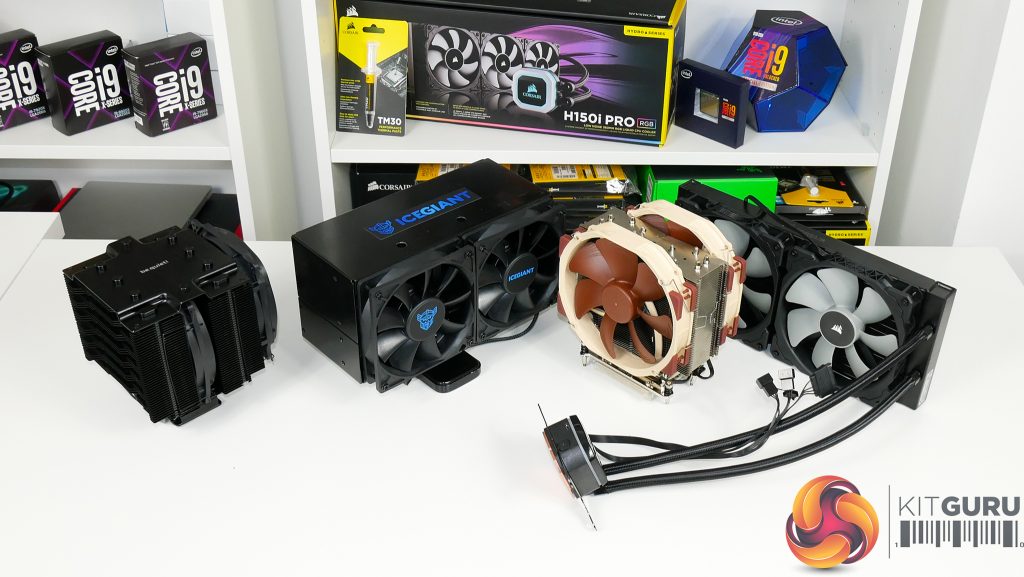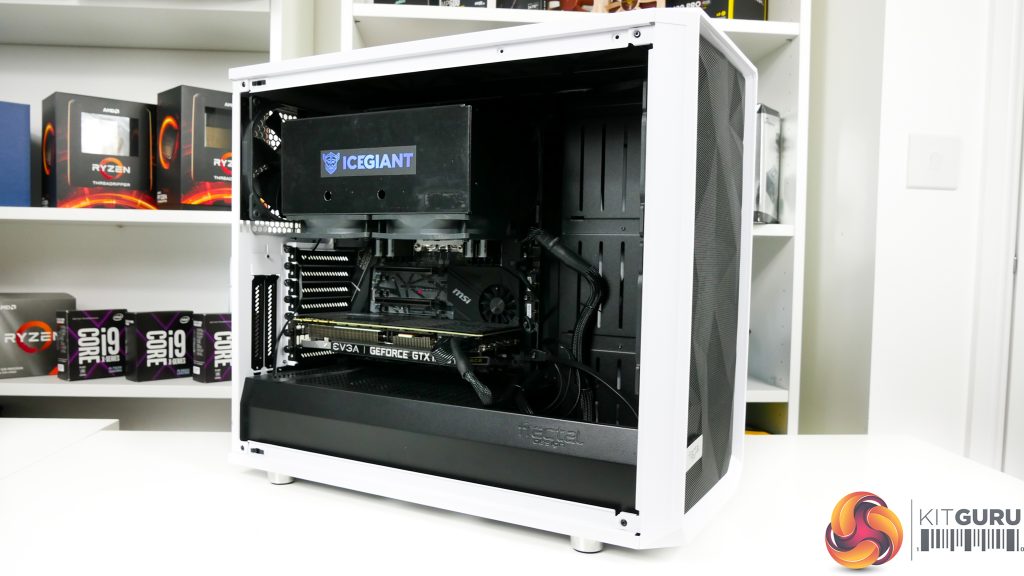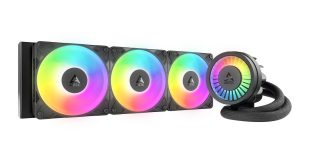There are several perfectly valid ways to test CPU coolers….
Some people may be interested in raw performance from the off-the-shelf components. In this case they would be interested in testing with the stock fans at full speed.
Some people may be interested in the performance offered up by their heatsink. In this case, they would be interested in testing that switches out the fans for faster, strong, or higher-quality units.
Some people may be interested in the balance between noise and thermal performance. In this case, they would be interested in noise normalised testing from each of the coolers in the off-the-shelf configuration.
Some people may be interested in the optimal balance between noise and thermal performance. In this case, they would be interested in noise normalised testing using specific fans that offer particularly good performance at lower noise levels.
Some people may be interested in the effect their cooler has on surrounding hardware such as the motherboard VRM temperatures. In this case, they may be interested in testing with the off-the-shelf configuration in multiple orientations (if feasible).
Put simply, we are trying to highlight that there are many ways to focus on testing CPU coolers and it depends on what one is trying to discover.
We understand that noise normalised testing is considered a particularly good measure of optimised cooler performance without manufacturers simply slapping on faster fans to compensate for limited heatsink performance.
We also understand that noise normalised performance is of little relevance if one simply wants their CPU to stay below a specific temperature level when it is loaded, irrelevant of how much noise is output (within reason).
All of these specific instances are perfectly valid and that is why it is important to read a variety of sources and testing approaches when making a purchasing decision.
Test Configuration:
For this article, we are interested in a specific outcome – of the coolers we currently have on hand, which offers us the best ability to manage the thermal load from our overclocked 3990X in our use case. We want to know what the best cooler is from a thermal perspective, even if it comes at the expense of higher noise output, increased surrounding hardware temperatures, additional ‘ugliness’ in our build, etc.
CPU Cooler Mounting Orientation:
With the system mounted inside a chassis, we are particularly keen to see how the coolers operate in a real-world environment. The internal test data published by IceGiant highlights the effect that gravity has on orientation for cooling hardware that uses heatpipes.
According to their testing, air CPU coolers with conventional heatpipe designs are susceptible to heatpipe dry-out at lower thermal loads when mounted with the motherboard in the vertical orientation as opposed to the horizontal orientation. This is primarily due to the effect that gravity has on the capillary action of heatpipes.
We believe that the majority of users will be installing their hardware inside a chassis with the motherboard mounted in the vertical orientation and the CPU cooler therefore installed horizontally. This is how our test system is setup, rather than inside a chassis with horizontal motherboard mounting or on a horizontal, open-air test bench.
 KitGuru KitGuru.net – Tech News | Hardware News | Hardware Reviews | IOS | Mobile | Gaming | Graphics Cards
KitGuru KitGuru.net – Tech News | Hardware News | Hardware Reviews | IOS | Mobile | Gaming | Graphics Cards




